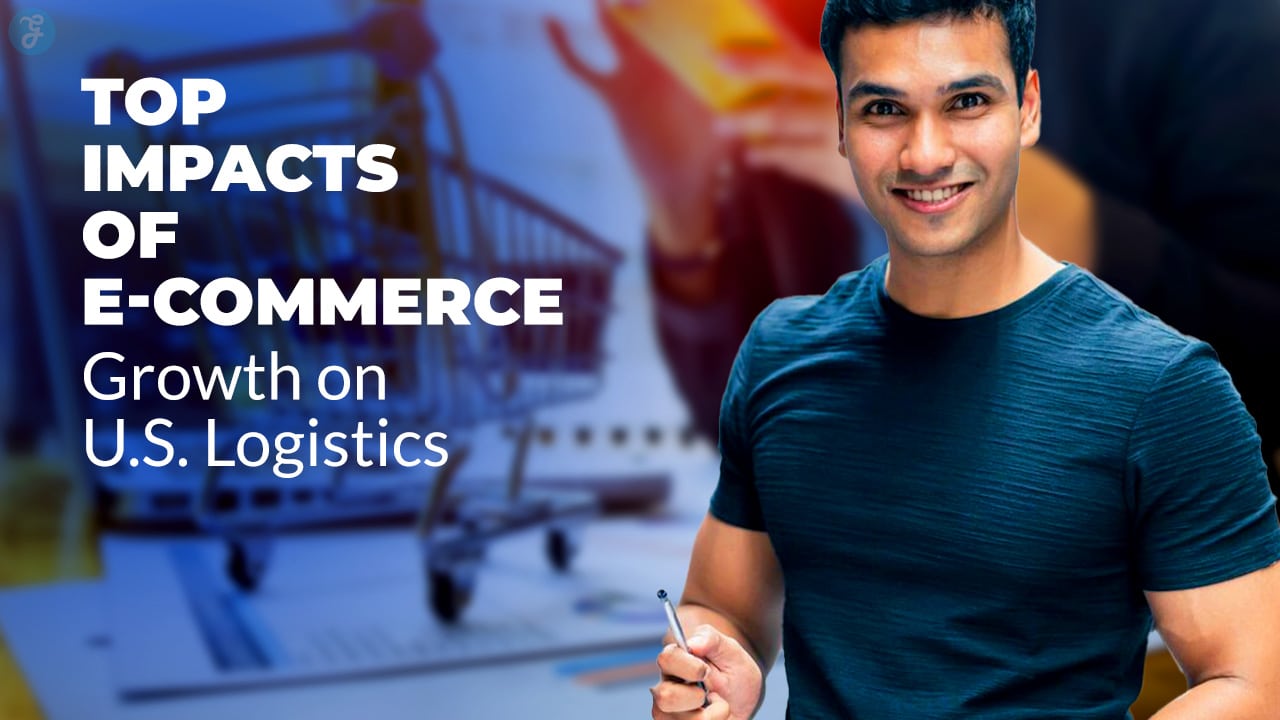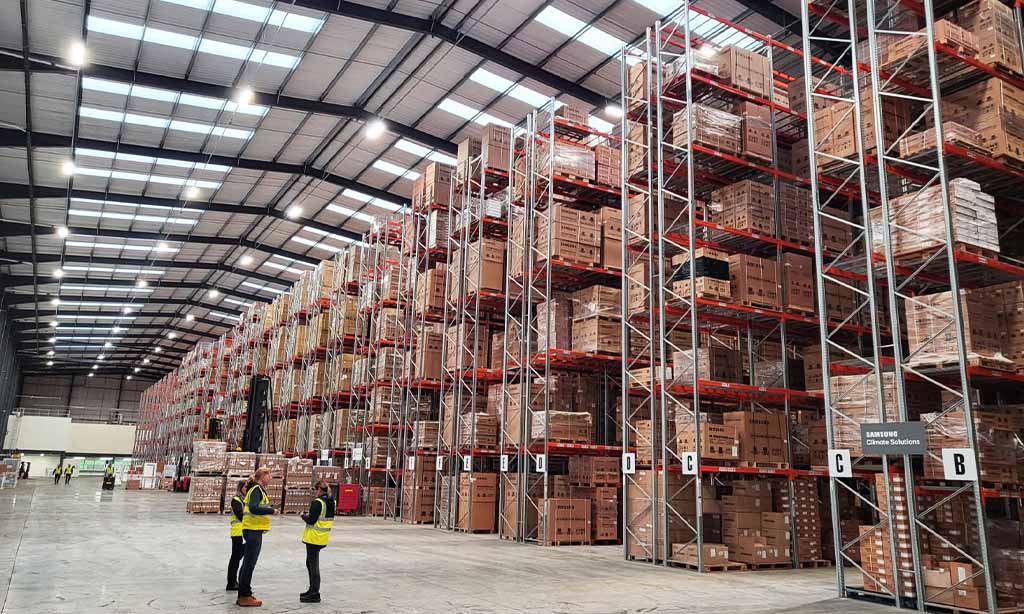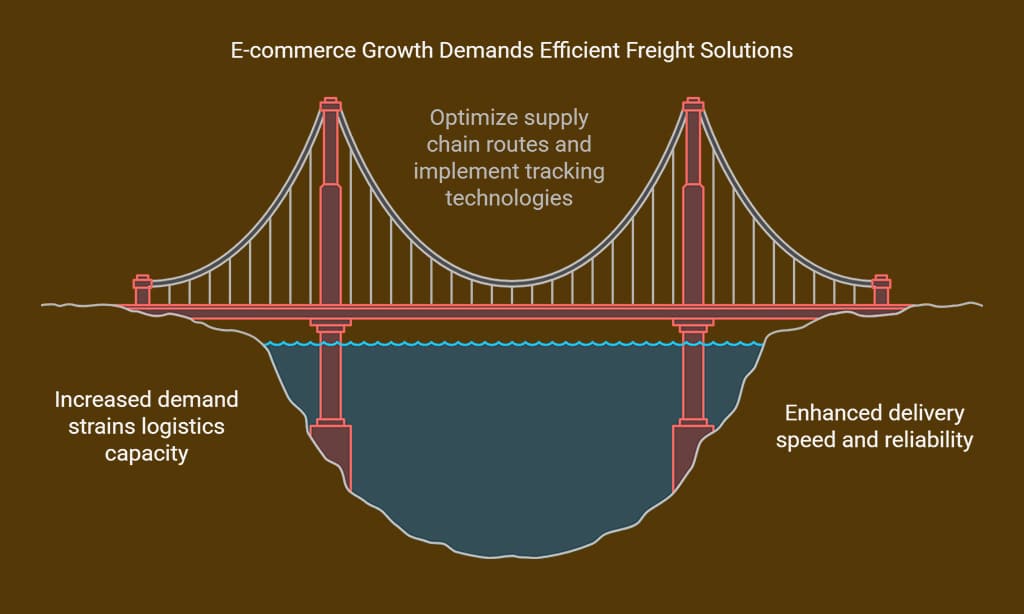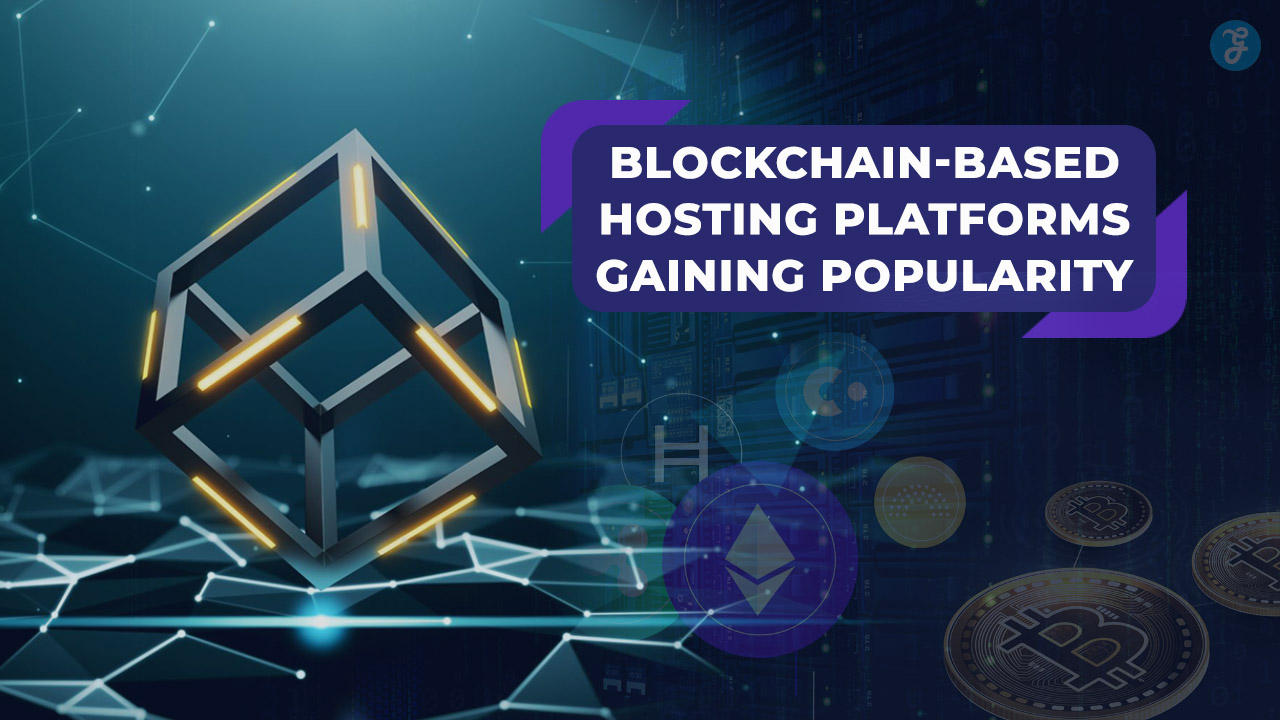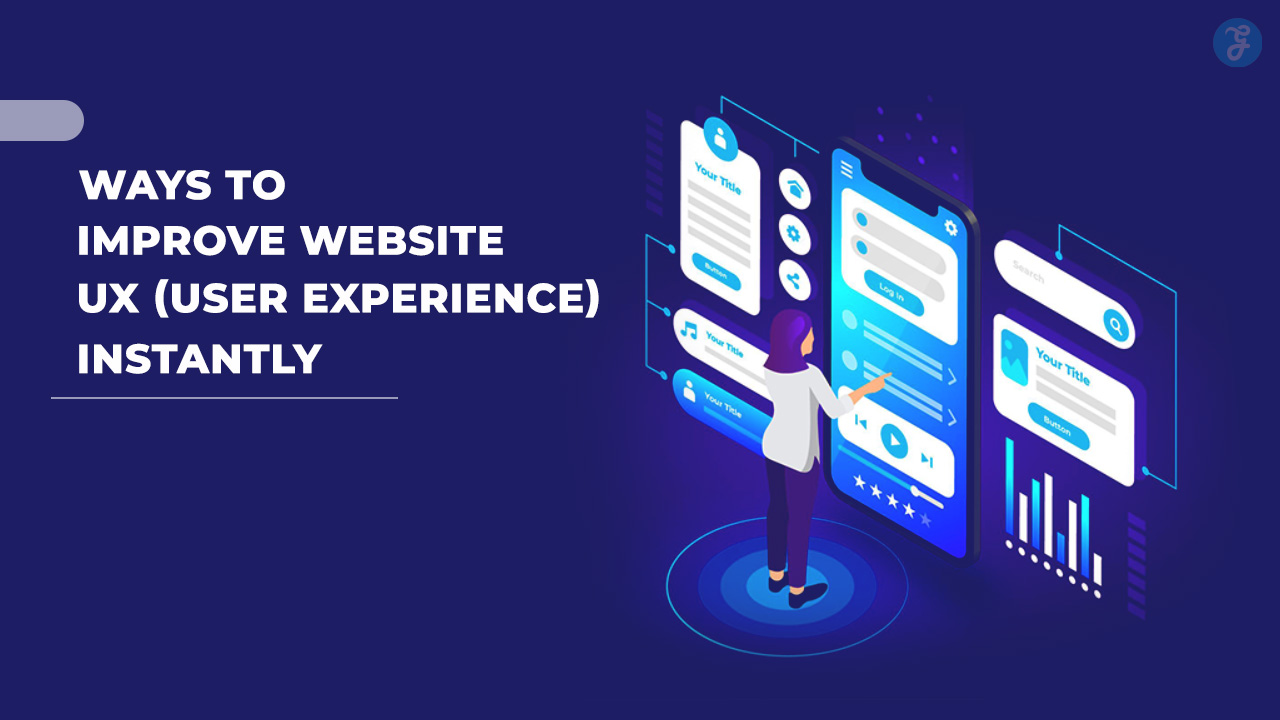E-commerce has revolutionized the way businesses operate, reshaping consumer expectations and redefining logistics processes across the United States. The rapid expansion of online shopping has put unprecedented pressure on logistics networks, compelling businesses to adopt new strategies, technologies, and infrastructure to keep up with demand.
From last-mile delivery innovations to sustainability concerns, the impacts of e-commerce growth on U.S. logistics are far-reaching.
This article delves deep into the Top 10 Impacts of E-commerce Growth on U.S. Logistics, examining how businesses and logistics providers are adapting to this seismic shift.
Key Impacts of E-commerce Growth on U.S. Logistics
E-commerce has significantly transformed logistics in the United States, creating both opportunities and challenges for businesses. The rapid increase in online shopping has placed immense pressure on supply chains, demanding faster deliveries, efficient inventory management, and improved transportation networks.
Companies are investing in technology-driven solutions to streamline operations and maintain a competitive edge in the industry. Here are the most profound impacts that e-commerce growth has had on U.S. logistics.
1. Surge in Last-Mile Delivery Demand
As online shopping becomes the norm, the demand for last-mile delivery services has skyrocketed. Consumers expect fast, reliable deliveries, often within the same day or even within hours. This has put immense pressure on logistics companies to enhance efficiency while managing costs.
Challenges in Urban vs. Rural Last-Mile Logistics
| Area | Challenges | Solutions |
| Urban | Traffic congestion, limited parking, high delivery density | Smart route planning, bike couriers, designated drop-off hubs |
| Rural | Long distances, fewer delivery points, high operational costs | Drone deliveries, regional fulfillment hubs, strategic partnerships |
Innovations in Last-Mile Logistics
To tackle these challenges, logistics companies are implementing new technologies such as:
- Drones: Companies like Amazon are testing drone delivery services for faster shipments.
- Autonomous Vehicles: Self-driving delivery trucks and robots are being deployed in select cities.
- Smart Lockers: Amazon Lockers and similar services reduce failed delivery attempts.
2. Expansion of Warehousing and Fulfillment Centers
With the surge in online orders, businesses are investing heavily in warehousing infrastructure to store and process inventory efficiently. The demand for rapid order fulfillment has led to the transformation of traditional warehouse models into more automated, tech-driven spaces.
Companies are adopting innovative solutions to handle high order volumes while maintaining accuracy and efficiency. Warehousing is no longer just about storage; it has become a critical component of the e-commerce ecosystem, ensuring faster deliveries and improved customer satisfaction.
The Rise of Micro-Fulfillment Centers
| Type | Benefits |
| Micro-Fulfillment Centers | Faster deliveries, reduced shipping costs, localized inventory |
| Dark Stores | Increased efficiency, repurposed retail spaces, streamlined operations |
| Automated Warehouses | Enhanced processing speed, reduced human error, cost efficiency |
Impact of Warehouse Automation
- AI-Powered Inventory Management: Predictive analytics optimize stock levels and prevent shortages.
- Automated Picking Systems: Robotics streamline the order fulfillment process, reducing labor costs and increasing accuracy.
- Smart Sorting Systems: AI-driven logistics hubs improve efficiency, ensuring faster dispatch and minimizing misplacements.
- Cloud-Based Warehouse Management Systems (WMS): Enables real-time tracking and enhanced operational control.
Businesses that fail to upgrade their warehousing infrastructure risk falling behind competitors who leverage automation and localized fulfillment solutions.
3. Increased Pressure on Supply Chain Efficiency
To meet growing demand, businesses must enhance their supply chain resilience. E-commerce has significantly altered traditional supply chain models, requiring companies to develop faster, more agile, and data-driven logistics strategies.
The growing complexity of supply chain networks, influenced by global trade fluctuations and evolving consumer demands, necessitates advanced technological solutions to optimize efficiency. Companies that fail to adapt risk facing delays, increased costs, and supply chain bottlenecks.
Role of AI and Machine Learning
| Feature | Impact |
| Predictive Analytics | Reduces stockouts and overstock situations, ensuring optimal inventory management |
| Automated Route Planning | Optimizes delivery routes, saving costs and reducing transit times |
| AI-Powered Demand Forecasting | Improves inventory allocation, minimizing supply chain disruptions |
| Smart Warehousing | Enhances automation in order processing, reducing labor dependency |
Overcoming Bottlenecks
- Real-Time Tracking: GPS and IoT devices provide end-to-end supply chain visibility, allowing businesses to monitor shipments in real time and prevent potential delays.
- Data-Driven Decision-Making: Companies leverage big data for improved logistics operations, enabling proactive problem-solving and enhanced efficiency.
- Flexible Supply Chain Networks: Businesses are adopting hybrid fulfillment models, such as a mix of in-house and third-party logistics providers, to mitigate disruptions.
- Supplier Diversification: Reducing dependency on single-source suppliers to avoid material shortages during high-demand periods.
By integrating these technological advancements and strategic measures, businesses can optimize supply chain efficiency and stay ahead in the rapidly evolving e-commerce landscape.
4. Growth of Third-Party Logistics (3PL) Services
Many businesses are outsourcing logistics to 3PL providers to scale operations efficiently. The growing complexity of supply chain management, coupled with increasing consumer demands for faster deliveries, has made third-party logistics (3PL) services an essential component of modern e-commerce.
These providers offer expertise in warehousing, transportation, and inventory management, helping companies enhance efficiency, reduce costs, and focus on core business activities. By leveraging 3PL services, businesses can streamline operations, expand market reach, and adapt to changing logistics challenges seamlessly.
Why Companies Opt for 3PL Services
| Benefit | Explanation |
| Cost Reduction | Eliminates in-house logistics management expenses |
| Scalability | Allows businesses to expand without logistical constraints |
| Technology Access | Provides access to advanced logistics software and automation |
5. Rising Costs in Logistics Operations
The expansion of e-commerce logistics comes at a cost. Rising fuel prices, labor shortages, and inflation are driving up operational expenses. As more businesses move towards digital sales channels, logistics providers face mounting pressure to keep up with delivery demands while managing cost efficiency.
Additionally, the need for advanced technology integration, workforce retention, and sustainability initiatives further contribute to increasing expenses. Companies must navigate these cost challenges carefully to remain competitive in the fast-paced e-commerce industry.
Key Cost Drivers
| Factor | Impact |
| Fuel and Transportation | Increases overall shipping costs due to fluctuating fuel prices and demand for faster deliveries |
| Warehouse Rental and Labor | Adds to overhead expenses as fulfillment centers expand and labor shortages drive up wages |
| Investment in Technology | Required for automation and efficiency, but initial setup costs can be high |
| Supply Chain Disruptions | Causes delays and increases costs due to geopolitical issues, natural disasters, or economic instability |
Cost-Optimization Strategies
- Route Optimization Software: Helps logistics companies plan the most efficient routes, reducing fuel consumption and delivery times.
- Partnerships with 3PL Providers: Enables businesses to share logistics infrastructure and resources, lowering operational expenses.
- Sustainable Packaging to Reduce Material Costs: Eco-friendly materials can lower long-term costs while aligning with green initiatives.
- Automation in Warehousing: AI-driven inventory management systems reduce human errors and labor costs.
- Bulk Shipping Agreements: Negotiating contracts with carriers for bulk shipments can lower per-unit shipping costs.
By leveraging these strategies, businesses can mitigate the impact of rising costs and maintain profitability while meeting the growing demands of e-commerce logistics.
6. Sustainability and Green Logistics Initiatives
Environmental concerns are pushing companies to adopt greener logistics solutions. As the demand for e-commerce grows, logistics companies are facing increasing pressure to reduce their carbon footprint and implement sustainable practices.
Many businesses are investing in renewable energy sources, optimizing delivery routes to lower emissions, and adopting eco-friendly packaging to align with sustainability goals. Additionally, regulations and consumer preferences are accelerating the shift toward greener logistics operations, ensuring long-term environmental benefits.
Sustainable Logistics Trends
| Trend | Benefit |
| Electric Delivery Vehicles | Reduces carbon footprint |
| Carbon-Neutral Warehouses | Lowers energy consumption |
| Recyclable Packaging | Minimizes waste |
7. Impact on Freight and Transportation Networks
The growth of e-commerce has led to a surge in freight movement across the country. With increased consumer demand for faster deliveries and more frequent shipments, transportation networks have been pushed to their limits.
The need for efficient freight logistics has never been more critical, and companies are investing heavily in innovative solutions to address growing challenges. From optimizing supply chain routes to leveraging real-time tracking technologies, the logistics industry is evolving rapidly to accommodate the demands of e-commerce.
Challenges Facing Freight Transportation
| Challenge | Impact |
| Overloaded Trucking Networks | Increased congestion, delivery delays, and higher fuel costs |
| Increased Rail and Air Freight Demand | Strain on infrastructure, rising operational costs, and scheduling inefficiencies |
| Rising Fuel Costs | Higher transportation expenses, affecting profitability |
| Regulatory Compliance | Stricter regulations on emissions and working hours leading to operational changes |
Adaptations in Transportation
| Adaptation | Benefit |
| Investment in New Shipping Routes | Reduces transit times and alleviates congestion |
| Digitization of Freight Management | Enhances tracking, reduces errors, and improves efficiency |
| Automation in Freight Handling | Speeds up processing at warehouses and ports |
| Use of Alternative Fuels | Reduces carbon footprint and dependence on traditional fuels |
By embracing digital tools, sustainable practices, and alternative transportation methods, logistics companies can navigate the increasing demands of e-commerce while maintaining operational efficiency and cost-effectiveness.
8. Technological Innovations Driving Logistics Evolution
Tech advancements are streamlining logistics operations. Companies are leveraging cutting-edge technologies to enhance efficiency, reduce costs, and improve delivery accuracy. These innovations are transforming logistics networks, making them more responsive to the growing demands of e-commerce.
Automation, AI-driven analytics, and IoT-enabled tracking are now integral to modern logistics management. The adoption of these technologies is helping businesses increase visibility into supply chains, minimize delays, and improve customer satisfaction.
Cutting-Edge Technologies
| Technology | Benefits |
| IoT for Real-Time Shipment Tracking | Provides end-to-end visibility, reduces losses, and enhances delivery accuracy |
| Blockchain for Supply Chain Transparency | Ensures secure, tamper-proof transactions and improves trust among stakeholders |
| Warehouse Robotics for Faster Fulfillment | Speeds up order processing, minimizes errors, and reduces labor costs |
| AI-Driven Predictive Analytics | Optimizes inventory management and forecasts demand fluctuations accurately |
| Automated Delivery Drones & Vehicles | Enhances last-mile delivery efficiency and reduces dependency on human drivers |
As technology continues to advance, businesses that embrace these innovations will gain a competitive edge, ensuring faster, smarter, and more sustainable logistics solutions.
9. Changing Consumer Expectations and the Need for Speed
Consumers now expect lightning-fast shipping times, driven by major e-commerce platforms setting new delivery standards. With companies like Amazon, Walmart, and Target offering same-day and next-day delivery options, customer expectations have evolved, creating pressure on logistics providers to meet increasingly tighter deadlines.
To remain competitive, businesses must adopt faster fulfillment processes, invest in better inventory management, and leverage innovative delivery methods.
Trends in Express Delivery
| Service | Benefit |
| Same-Day Delivery | Enhances customer satisfaction by reducing wait times and increasing convenience |
| Subscription-Based Delivery | Provides cost-effective shipping options for frequent shoppers and builds brand loyalty |
| On-Demand Local Delivery | Uses gig economy couriers for rapid urban deliveries, reducing last-mile delivery inefficiencies |
| Drone & Autonomous Vehicle Deliveries | Improves delivery speeds while reducing labor costs and traffic congestion |
By integrating these advanced delivery models, businesses can improve customer retention and maintain a competitive edge in the rapidly evolving e-commerce market.
10. The Future of U.S. Logistics Amid E-commerce Expansion
As e-commerce continues to expand, the logistics industry is poised for a significant transformation. Innovations in automation, sustainability, and infrastructure development will redefine how goods are transported, stored, and delivered. Companies will need to adopt new technologies and improve operational efficiencies to stay competitive in an evolving market.
Predictions for the Next Decade
- AI-Powered Supply Chains: AI-driven logistics will enhance predictive analytics, automate decision-making, and improve real-time tracking to reduce inefficiencies and delays.
- Hyperloop Freight Transportation: Emerging high-speed transportation systems like the Hyperloop could revolutionize freight movement, drastically reducing transit times and costs.
- Autonomous Delivery Fleets: Self-driving trucks, drones, and automated delivery bots will increasingly be used to handle last-mile delivery, improving efficiency while lowering labor costs.
- Sustainable Logistics Solutions: Eco-friendly packaging, carbon-neutral warehouses, and alternative fuel sources will gain traction as businesses prioritize sustainability and regulatory compliance.
- On-Demand Warehousing: Flexible storage solutions powered by AI and blockchain will allow businesses to dynamically adjust inventory levels based on market demand.
Takeaways
The impacts of e-commerce growth on U.S. logistics are reshaping the industry at an unprecedented pace. Companies must embrace new technologies, optimize costs, and implement sustainable practices to remain competitive.
As logistics networks continue to evolve, businesses that proactively adapt will thrive in the ever-changing landscape of e-commerce logistics.


